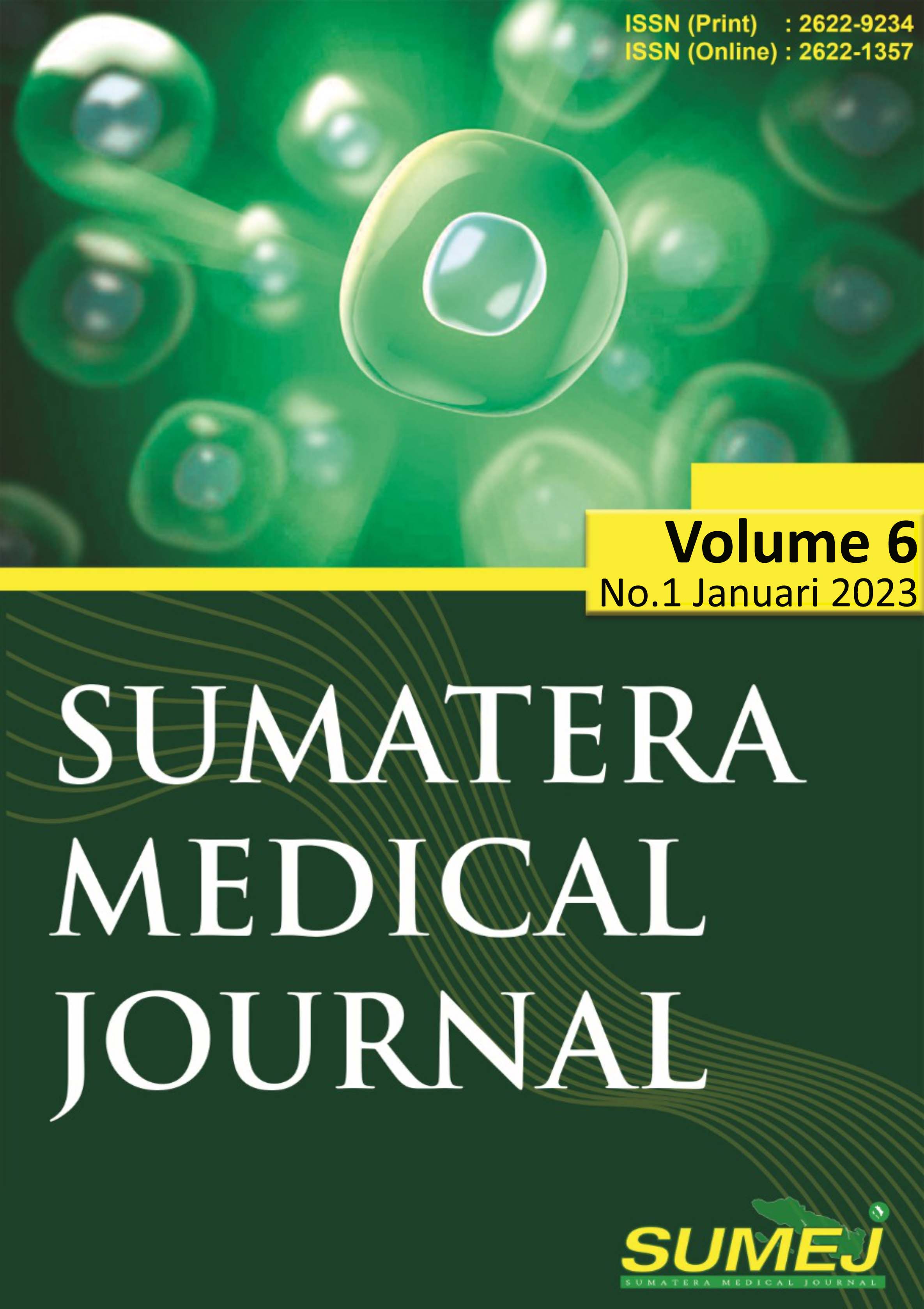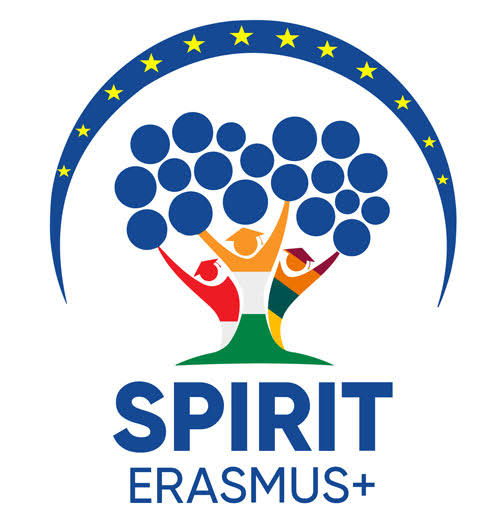Analysis of Risk Factors Associated with Maskne in the Era of the COVID-19 Pandemic
DOI:
https://doi.org/10.32734/sumej.v6i1.8015Keywords:
acne, COVID-19, mask, maskne, risk factorsAbstract
Background: The necessity to always use a mask in the era of the COVID-19 pandemic has given rise to a new term called maskne. Maskne is the appearance of acne that is triggered by wearing a mask. It usually occurs specifically in the area covered by the mask, focused on the cheeks, chin, and nose. Objective: This study aims to determine the risk factors associated with the occurrence of maskne. Methods: A cross-sectional study was conducted on the Faculty of Medicine students, Universitas Sumatera Utara class 2018. This study uses primary data from questionnaires and observation of respondents' face photos. Results: Based on statistical analysis, 99 out of 221 respondents (44.8%) experienced maskne. Bivariate analysis shows p-values <0.05 for gender, duration of mask use, and previous acne history. On the other hand, it was obtained p-value >0.05 for the type of mask and mask changing habit. Conclusion: Based on multivariate analysis, the p-value <0.05 for gender indicates that gender is the most dominant risk factor in the incidence of maskne. Furthermore, there is a significant association between gender and the occurrence of maskne. Females are twice as likely to experience maskne.
Downloads
References
Du Toit A. Outbreak of a novel coronavirus. Nat Rev Microbiol. 2020;18(3):123. Available from: https://doi.org/10.1038/s41579-020-0332-0.
Patel KP, Patel PA, Vunnam SR, Hewlett AT, Jain R, Jing R. Transmission of SARS-CoV-2: an update of current literature. Eur J Clin Microbiol Infect Dis. 2020;39(11):2005–11. Available from: https://doi.org/10.1007/s10096-020-03961-1.
World Health Organization. Coronavirus Disease 2019 (COVID-19) Situation Report - 1. WHO Indonesia Situation Report. 2020 Mar;(1):1–6. Available from: https://www.who.int/docs/default-source/searo/indonesia/covid19/who-indonesia-situation-report-1.pdf.
World Health Organization. Coronavirus Disease 2019 (COVID-19): Masks [Internet]. 2020 [cited 2021 Apr 21]. Available from: https://www.who.int/emergencies/diseases/novel-coronavirus-2019/question-and-answers-hub/q-a-detail/coronavirus-disease-covid-19-masks.
Teo WL. Diagnostic and management considerations for ‘maskne’ in the era of COVID-19. J Am Acad Dermatol. 2021;84(2):520–1. Available from: https://doi.org/10.1016/j.jaad.2020.09.063.
Hayat W, Malik LM, Mukhtar R, Khan MQ, Saeed A, Rashid T. ‘Maskne’ (Mask Induced Acne) in Health Care Professionals of Tertiary Care Hospitals of Lahore During Covid-19 Pandemic. Pak Postgrad Med J. 2020;31(2):61–5.
Hidajat D. Maskne: Akne Akibat Masker. J Kedokteran. 2020;9(2):202–14.
Rosner E. Adverse effects of prolonged mask use among healthcare professionals during COVID-19. J Infect Dis Epidemiol. 2020;6(3):6–10. Available from: https://doi.org/10.23937/2474-3658/1510130.
Ramesh A, Thamizhinian K. A clinico-epidemiological study of mask induced facial dermatoses due to increased mask usage in general public during COVID-19 pandemic. Int J Res Dermatol. 2021;7(2):232. Available from: https://doi.org/10.18203/issn.2455-4529.intjresdermatol20210574.
Kang S, Amagai M, Bruckner AL, Enk AH, Margolis DJ, McMichael AJ, et al., editors. Fitzpatrick’s Dermatology. 9th ed. Vol. 1. New York: McGraw-Hill Education; 2019.
Chaiyabutr C, Sukakul T, Pruksaeakanan C, Thumrongtharadol J, Boonchai W. Adverse skin reactions following different types of mask usage during the COVID-19 pandemic. J Eur Acad Dermatol Venereol. 2021;35(3):e176–e178. Available from: https://doi.org/10.1111/jdv.17039.
Zuo Y, Hua W, Luo Y, Li L. Skin reactions of N95 masks and medial masks among health-care personnel: A self-report questionnaire survey in China. Contact Dermatitis. 2020;83(2):145–147. Available from: https://doi.org/10.1111/cod.13555.
Dogan EI, Kaya F. Dermatological findings in patients admitting to dermatology clinic after using face masks during Covid-19 pandemia: A new health problem. Dermatol Ther. 2021;Mar:1–7. Available from: https://doi.org/10.1111/dth.14934.
Kim J, Yoo S, Kwon OS, Jeong ET, Lim JM, Park SG. Influence of quarantine mask use on skin characteristics: One of the changes in our life caused by the COVID-19 pandemic. Skin Res Technol. 2021;27(4):599–606. Available from: https://doi.org/10.1111/srt.12992.
Gomolin TA, Cline A, Russo M. Maskne: Exacerbation or Eruption of Acne During the COVID-19 Pandemic. J Cutaneous Med. 2020;4(5):438–439. Available from: https://doi.org/10.25251/skin.4.5.7.
Jose S, Cyriac MC, Dhandapani M. Health Problems and Skin Damages Caused by Personal Protective Equipment: Experience of Frontline Nurses Caring for Critical COVID-19 Patients in Intensive Care Units. Indian J Crit Care Med. 2021;23(2). Available from: [Link unavailable].
Kurt BÖ. The course of acne in healthcare workers during the COVID-19 pandemic and evaluation of possible risk factors. J Cosmet Dermatol. 2021;Oct:1–9. Available from: https://doi.org/10.1111/jocd.14530.
Yaqoob S, Saleem A, Jarullah FA, Asif A, Essar MY, Emad S. Association of Acne with Face Mask in Healthcare Workers Amidst the COVID-19 Outbreak in Karachi, Pakistan. Clin Cosmet Investig Dermatol. 2021;14(Oct):1427–1433. Available from: https://doi.org/10.2147/ccid.s333221.
Lin P, et al. Adverse skin reactions among healthcare workers during the coronavirus disease 2019 outbreak: A survey in Wuhan and its surrounding regions. Br J Dermatol. 2020;183(1):190–192. Available from: https://doi.org/10.1111/bjd.19089.
Jiajia L, et al. Skin damage among health care workers managing coronavirus disease 2019. J Am Acad Dermatol. 2020;82(5):1215–1216. Available from: https://doi.org/10.1016/j.jaad.2020.03.024.
Singh M, et al. Personal protective equipment induced facial dermatoses in healthcare workers managing Coronavirus disease 2019. J Eur Acad Dermatol Venereol. 2020;34(8):e378–e380. Available from: https://doi.org/10.1111/jdv.16628.
Downloads
Published
How to Cite
Issue
Section
License
Copyright (c) 2023 Sumatera Medical Journal

This work is licensed under a Creative Commons Attribution-NonCommercial-NoDerivatives 4.0 International License.
The Authors submitting a manuscript do so on the understanding that if accepted for publication, copyright of the article shall be assigned to Sumatera Medical Journal (SUMEJ) and Faculty of Medicine as well as TALENTA Publisher Universitas Sumatera Utara as publisher of the journal.
Copyright encompasses exclusive rights to reproduce and deliver the article in all form and media. The reproduction of any part of this journal, its storage in databases and its transmission by any form or media, will be allowed only with a written permission from Sumatera Medical Journal (SUMEJ).
The Copyright Transfer Form can be downloaded here.
The copyright form should be signed originally and sent to the Editorial Office in the form of original mail or scanned document.











